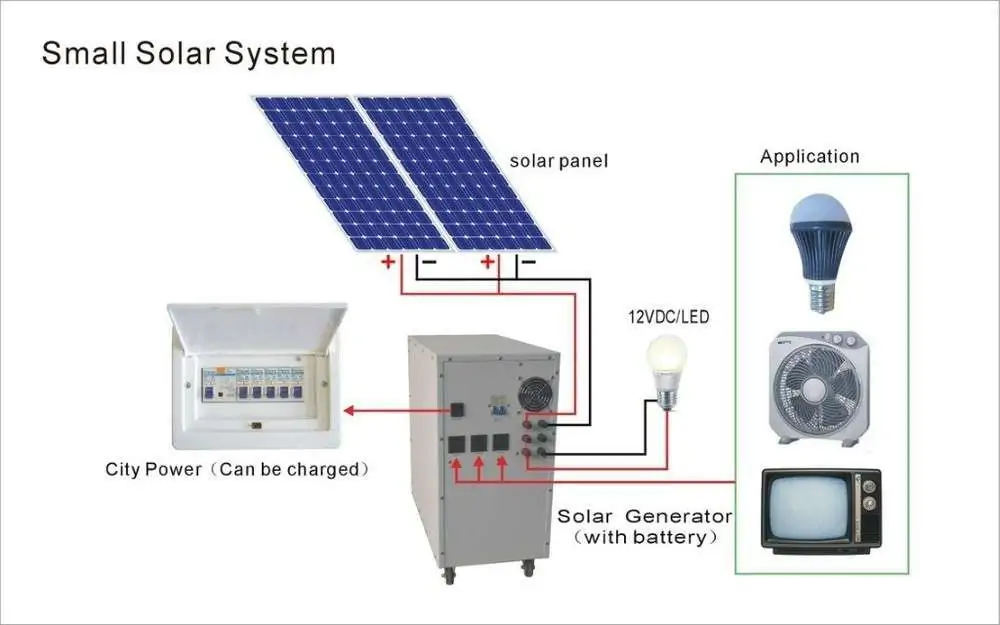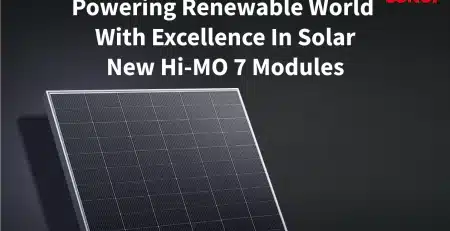The calculation of the photovoltaic (PV) system
Photovoltaic systems can be divided into two types: a fully autonomous and semi autonomous (connected to the mains). Stand-alone systems to power mobile objects, or objects that are far from the main power lines in places where the seal line is difficult or unfavorable economic reasons are conceived. The second type of system can reach the missing energy from the total output, or vice versa, to be in excess of the network. As is known in the solar system are: proper solar modules, solar rechargeable batteries (battery), solar charge controller, battery level, solar connection cables, and if the consumer has an AC voltage must be applied, the inverter will be complemented by a set of
The system works in the next solar panel during daylight produces an electric current, and by using special controller battery (battery). The controllers monitor the battery charge level in the automatic mode. The solar inverter converts the DC battery voltage to AC 220th Sizing and selection of components is the most important point in designing a solar power or photovoltaic Kit.
Click here to read about solar panel price in Dubai
Dies done in several steps:
1) Please list all anticipated loads to their electricity consumption, the quantity of each type of load and the average daily operating time of each of the devices. This phase can be described as estimates,
2) The next step is to reduce them as far as possible both in terms of a list of all devices (particularly energy-intensive), and in terms of “population” of any kind of load. This will significantly reduce the capacity of all components and thus the entire original cost of the system, as well as the cost of future maintenance.
The other devices, the most energy-efficient lighting such as used exclusively by energy efficient LED lamps, or who choose to have the same light output figures for the consumption of a 5-10 times better than incandescent bulbs. Also, we discuss the possible use of devices for constant voltage ausgelegt.Dies gives you the following advantages
a) No loss in the inverter, up to 10%,
b) The possible failure of the inverter at all (all loads are constant current) and reductions in its value,
c) Increase the reliability of the system by eliminating a single link;
d) Improving the security of the system by eliminating the high-voltage AC 220 V,
e) Devices on the 220 adapter uses and thus will her double-conversion topology to avoid.
3) Well, after all the “gimmicks” and “utryasok”, compiled using data from the list you want to count the total daily energy consumption of the system. It is very easy – just multiply each type of equipment the following values: power supply, the number of identical (in type and power) units and the average daily use of this device, and then summed. The resulting figure in kilowatt hours is the required energy of the system per Tag.
For example,
A Television output 100W, working 3 hours a day,
Ten energy-saving lamps 20W power from anyone who burn for 6 hours a day,
Refrigerator energy class “A” a daily consumption of 600 W × Hoben described,
we get: 100W × 20 × 10 × 6 hours + 3:00 W 600 W × H = H = H × × 2100Vt 2.1kVt63kW × h – Monthly electricity consumption is 30 times or more seinDie calculation must load DC and AC current can be carried out because of losses in the inverter (5-10%)
4) The next step – the definition of battery capacity. For this purpose we have to choose the nominal voltage battery packs, as well as do the number of “clear” (no battery charge from the SB) days in which the system is loaded only on the roster for the battery. Nominal voltage of the battery unit is made of the standard range of 12V, 24V, 48V, etc., that is selected multiple of 12V.
Click here to read about solar panels suppliers in UAE
The criteria for this choice are:
a) the presence in the consumer-direct current
b) The total capacity of the system
For small power systems (less than 1 kW) is entitled to use the battery with a rated voltage of 12 volts. With increase in capacity should be nominal voltage of the battery unit may be chosen. This is necessary to decrease for better performance and the inverter current flowing through the controller, inverter and cables.
The depth of discharge of the battery affects the battery life – the more the depth of discharge, the faster the battery is running low. The recommended depth of discharge no more than 50-60%. The energy stored in the battery capacity is calculated by multiplying the battery, the rated voltage. Calculated in paragraph 3, the size of the daily energy consumption by the number of “cloudy” day multiplied up to be 50-60% of battery capacity.
Our system has to “endure” three days without charge from the outside. The resulting higher number of daily consumption
2.1kVt × H multiplied by 3 and divide by 0.5 to get 12.6kVt × h This amount of energy must be in a fully charged battery
system. Would be in our case at a nominal voltage of 12 V battery capacity, have a 1000A make x h losses in the battery
when the temperature varies from 25 ° C, according to the table by multiplying by the factor: temperature ,
° C Ratio 25 1.0020 1.0315 1.1010 1.205 1.280 1,36-5 1.50
The obtained value of the battery capacity is rounded up to the values of the standard range of capacity batteries. Divide
this number by the rated voltage of the battery and the required capacity of the battery. The number of dial-up batteries
in parallel by dividing the total capacity in the capacity of a single battery gefunden.
5) you can use the grid tie inverter output. This is done taking the entire both devices with a distance of at least 25% of
the capacity can be connected done.It is also important to remember that require the system to devices that have a significant
start-up capacity.
6) The next step – the definition of total nominal capacity of solar modules from which the solar station. And here the fun
begins. To be considered in the calculation process:
a) The location of the solar station,
b) the period of use: All year round? Summer? Winter;?
C) the presence of the blocking of solar panels during the daylight hours of relief supplies, buildings, trees, etc.
d) the ability to optimally aligned orientation of the modules (and correctly with the right slope of the roof, for example),
e) the desire or to monitor the ability to the sun for one or two coordinates.
Consider the statement block without “aggravating factors”, ie, there is nothing in our system during the day
(even a hawk in the sky does not cast a shadow on our table), so tracking system is not stationär.Aus the values of solar
radiation in the calculation was made of sun exposure in the last month “worst” in the period starting from the station.
For year-round use, of course, it’s December. In general, solar radiation for most regions is strong in winter because of
low clouds, low sun and low latitudes of the day is reduced. In solar radiation values for the same location and on the same
day of the year are highly dependent on the orientation of the perception of the radiation field. To make in this regard in
order to calculate the value of solar radiation:
1) For areas with a slope equal to the width of the area, if you want to receive the maximum amount of electricity per year as a whole,
2) for sites in a corner horizon for a large width of 15 ° for year-round system, but it works, and in December the same
strain as in the summer. In this case, the summer a huge glut of electricity.
3) For the best platform for the targeted period of the solar system (for the summer at an angle to the horizontal bottom
width of 15 °, for the winter to more than 15 ° latitude).
In all three cases, the azimuth orientation of the course to the south. By selecting from the tables of the value of solar
radiation (kW × ch/m2) for a given month, we pikochasov a month.
For example, in Moscow in July and 167kVt × 167 or ch/m2 pikochasov. Tables of solar radiation for several cities in
Russia and the former Soviet Union, see “Table of the sun.” Number pikochasov conditional mean solar time in the light of
the same rating. In the real performance of the solar module is different from the evaluation to a number of reasons:
the lower the lighting during the day compared to the conditions of certification (1000Vt/m2 lighting, temperature 25 ° C,
spectrum AM 1.5), a strong heating of the solar radiation and module and oblique incidence of solar radiation in stationary
installation of solar panels.
Click here to read about solar panel price in UAE
Sun pikochasy show time, which operates the module, as in a certification, even if the sun
is less intense covered (in Moscow, for example, the maximum illumination rarely more than 750-800Vt/m2), but the truth is
much longer for the same Period. For example, the average monthly solar radiation for the period is equal to E (kW × ch/m2),
then the module power P (W) in this period produced the following amount of energy W (kW × h): W = k PE/1000, where k
(0.5 in summer, winter, 0.7) coefficients, taking into account the oblique incidence of solar radiation on the surface of
the solar panels during the day, the difference in the heating of the modules in the summer and Winter, as well as other
Verluste.Nun we can calculate the total power modules. To do this, there is a formula: PΣ = 1000 W / K e where PΣ now
required total power modules.
Divide this number by the power module for installation on dimensions and the required number of modules of the same size.
The result is rounded up to a certain, even if the number of modules in the system needs to be. The above tracking the sun
gives a boost in the form: only the azimuth – 20%, an additional amount of the sun for an additional 10%. The battery charge
controller so that the current and the current solar cell and the maximum load is exceeded selected. Further, taking into
account the size of the currents, and the length of the connecting lines to choose their section. In summary, we find that
in most cases it is advisable to use a hybrid system.
Are you looking for best solar energy product supplier in UAE then PowernSun is the right place.
Reach us here
Power n Sun:
Office Suite 3510, Burlington Tower,
Marasi Drive Business Bay, Dubai, UAE
Phone : +971 43686393
Email : info@powernsun.com
Website : https://powernsun.com/











Leave a Reply